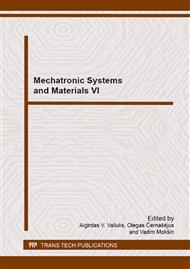[1]
J.W. Pilarczyk, Z. Muskalski, B. Golis, S. Wiewiórowska, M. Suliga, N. Nickoletopoulos, Influence of heat treatment of TRIP steel wire rod on structure and mechanical properties, Wire Journal (November 2007) 80–84.
Google Scholar
[2]
S. Wiewiórowska, The determination of optimal heat treatment process parameters ensured about obtaining in the final low carbon steel structure the maximal quantity of retained austenite decided about TRIP effect (in Polish), Hutnik – Wiadomości Hutnicze (1) (2009).
Google Scholar
[3]
S. Wiewiórowska, The influence of strain rate and strain intensity on retained austenite content in structure of steel with TRIP effect, Solid State Phenomena 165 (2010) 216–220.
DOI: 10.4028/www.scientific.net/ssp.165.216
Google Scholar
[4]
S. Wiewiórowska, Determination of content of retained austenite in steels with TRIP effect deformed at different strain rates, Steel Research International 81(9) (2010) 262–265.
Google Scholar
[5]
M. Kucharska, S. Wiewiórowska, Z. Muskalski, P. Bartosiński, The investigation of transformation of retained austenite into martensite for drawing process of wire rod made from medium carbon steel (0, 4% C) (in Polish), Rudy i Metale Nieżelazne (11) (2011).
DOI: 10.4028/www.scientific.net/ssp.220-221.661
Google Scholar
[6]
M. Kucharska, S. Wiewiórowska, Z. Muskalski, P. Bartosiński, The comparative analysis of etching methods revealing heterogeneous structure of steel with TRIP effect (in Polish), Hutnik–Wiadomości Hutnicze (8) (2012) 620–623.
Google Scholar
[7]
S. Wiewiórowska, Z. Muskalski, Analysis the influence of drawing process parameters on the amount of retained austenite in TRIP steel wires, Metalurgija 52(1) (2013) 32–35.
DOI: 10.4028/www.scientific.net/ssp.199.379
Google Scholar
[8]
S. Wiewiórowska, A theoretical and experimental analysis of the processes of drawing new-generation TRIP steel wires (in Polish): Series Monografie 18, Częstochowa (2011).
Google Scholar
[9]
E. Doege, S. Kulp, Ch. Sunderkötter, Properties and application of TRIP-steel in sheet metal forming, in: TRIP – Int. Conf. on TRIP Aided High Strength Ferrous Alloys, GRIPS – Proceeding, Ghent, Belgium, Germany, 2002, p.347–352.
DOI: 10.1002/srin.200200213
Google Scholar
[10]
K. Eberle, P. Candtinieaux, P. Harlet, New thermodynamical strategies for the production of high strength low alloyed multiphase steel showing a transformation induced plasticity (TRIP) effect, Steel Research 6 (1999) 233–238.
DOI: 10.1002/srin.199905632
Google Scholar
[11]
S. Wiewiórowska, Z. Muskalski, Analysis of the influence of drawing speed on the amount of retained austenite in TRIP steel wires, Solid State Phenomena 199 (2013) 379–383.
DOI: 10.4028/www.scientific.net/ssp.199.379
Google Scholar


